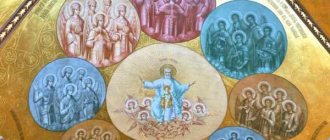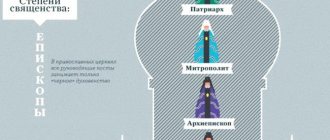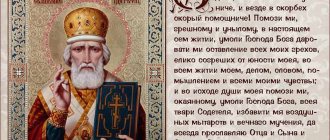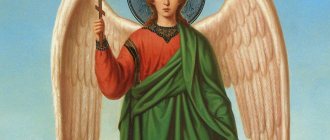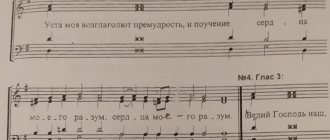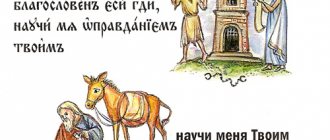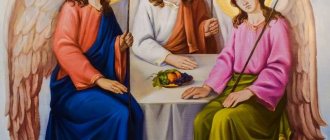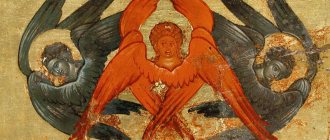Archangel Michael tattoo
Archangel
- the highest angel, messenger of God. In cinema and stories, three archangels are most often mentioned: Michael, Gabriel, Raphael. But if you turn to religious literature, you can find references to a larger number of Archangels. In the Orthodox Church, Archangels are most often mentioned with the names: Michael, Gabriel, Raphael, Uriel, Selaphiel, Yehudiel, Barachiel, Jeremiel, Sikhail, Zadkiel, Samuel, Jophiel. These names are also mentioned in other religions.
Heavenly angels
Angels live in subtle worlds and do not have a dense body. Moreover, their capabilities are much higher than human ones: these creatures, possessing a higher intelligence, can monitor the material world, and sometimes even correct the course of events. Essentially, they are intermediaries between God and people, between the spiritual and physical world.
Angels are invisible to the ordinary human eye. However, sacred texts contain a lot of evidence when an angel appeared before a righteous person or saint to convey to him the command of God.
Angels represent two elements: air and fire. With the help of fire, they punish sinners or cleanse their souls from filth. Air symbolizes the lightness and purity of the innocent angelic soul, as well as flight as the fastest way to travel.
The word “angel” itself comes from the ancient Greek word, which is translated as “messenger”, “messenger”. Angels in the minds of most people are beautiful creatures in long white robes, symbolizing purity, and with wings on their backs.
The inhabitants of the heavenly spheres have different tasks, each group of angels performs its own function. Some are busy creating galaxies, others are responsible for individual planets, and others are focused on the evolution of living beings. Theologians claim that every person living on Earth has his own guardian angel.
Ethereality and sexlessness of spirits
In 787, at the Seventh Ecumenical Council in the city of Nicaea, it was decided to depict Angels only in male form. This is consistent with the fact that the Holy Scriptures mention mostly male names for angels. Whether they are male or female, in this case it is pure convention. Angels are spiritual beings, and spirits do not have flesh, therefore they are asexual. The spirit can appear to people in the guise in which it wishes, and therefore any image of it is symbolic. In principle, the names of female angels have the same right to exist as men, but we adhere to established traditions.
It should be borne in mind that the images of cupids accepted in Western European painting have nothing in common with angels. They are relics of paganism. From the point of view of the Orthodox Church, all these creations of the Renaissance are nothing more than the fruit of the artistic imagination of the authors. You can talk about their aesthetic merits, but in no case should you look for any spiritual or philosophical meaning in them.
Nine ranks
Hierarchy is necessary to maintain life in the Universe. And in our world everything is built according to the principle of hierarchy: the solar system, human society or an anthill. It is worth remembering that physical reality is a projection of higher dimensions. This means that the earthly hierarchy repeats the divine system, although the imperfect human mind introduces its distortions.
The heavenly kingdom was created as a coherent system, where each element plays a specific role determined by divine design. This creates harmony in the universe. If order is disturbed, chaos arises, leading to death and destruction.
God created a system of clear distribution of functions so that creation would be perfect. Lucifer was cast out of heaven because he violated the established order and wanted to live by his own rules, throwing aside divine laws.
Christian theologians identify nine ranks in the heavenly hierarchy, distributed into three groups. These ranks, otherwise called steps, were described by many Christian authors, including John Chrysostom, Thomas Aquinas, Bonaventure and Dante Alighieri.
Although there is some disagreement, most theologians adhere to a system that includes three groups of angels. In some systems, the name sphere, circle or triad is adopted (since each group is represented by three types of angels).
Names given at holy baptism
In our everyday life there is the concept of “Angel’s Day”, that is, name day. It is a mistake to understand that the word “angel” always means one of the host of those ethereal beings discussed in the article. In this case, a saint is often meant, whose name the birthday boy received at baptism, and not an Angel. The Orthodox name Ivan can be given to a person born on the day of memory of John the Theologian, and Peter - on the day of the apostles Peter and Paul. These saints, just like the Guardian Angels, are our heavenly patrons, and, standing before the Throne of God, they pray to the Almighty to send us “earthly blessings and times of peace.”
Christian angelic hierarchy
Let us consider in detail the system adopted in Christianity. Each sphere (triad) represents a special type of angels. The first sphere includes the immediate environment of God. The second triad is represented by beings responsible for the structure of the Universe and maintaining divine order. The third group includes angels who are connected directly with people.
First sphere
The triad includes: seraphim, cherubim and thrones.
- Seraphim are the creatures closest to the Lord. The name comes from the Hebrew word for “flaming.” This is exactly how the biblical prophet Isaiah saw them. According to the prophet, the seraphim had six wings. Saint Dionysius the Areopagite placed the seraphim in first place in the hierarchy and pointed out their fiery love for truth and light.
- Cherubim are on the second level after seraphim. According to theologians, cherubim embody divine wisdom. Their goal is to pass on this wisdom to others. In the text of the Old Testament there is a cherub with a fiery sword, guarding the entrance to the Garden of Eden. The Israeli king David mentions that cherubim served as a means of transportation for the Lord. Therefore, in the Bible, in relation to the Almighty, the phrase “sitting on cherubim” is often found. There is disagreement about the origin of the word. According to the Talmud, the name comes from Aramaic and means “like a youth.” Other researchers are inclined to the Assyrian version, according to which cherub means “praying, blessing.”
- Thrones are angels surrounding God seated on the throne. In Orthodoxy they are also called God-bearing. However, this expression should be understood not literally, but in a figurative sense. They carry God within themselves and serve him faithfully. In addition, these creatures carry an evolutionary beginning, expressing the providence of God.
The mystic Jan van Ruysbroeck, who lived in the Middle Ages, wrote that the angels of the highest triad never interfere in conflicts that arise between people. But if a believer turns to the Creator with prayer, remains in a state of grace, strives for the Truth, then at these moments seraphim, cherubim or thrones are next to him. They are the ones who instill the highest love in people's hearts.
Second sphere
The second sphere includes: domination, strength, power.
- Dominance. They interact with earthly rulers, who must be exponents of the will of the Almighty. Angels instruct government officials, teach them wise management, and help restrain anger and other sinful feelings. Dominations are also exponents of free will. They are the ones responsible for raising angels at lower levels.
- The powers are a class of angels who can give a righteous person supernatural abilities, such as the gift of clairvoyance or healing the sick. They were the ones who helped Jesus Christ perform miracles to reveal the glory of God the Father. Also, the task of these creatures is to support a person in moments of despair and provide energy replenishment to overcome everyday adversity.
- Authorities occupy a special position in the triad. They are entrusted with an important task: to resist the devil and his retinue. The authorities can prevent demonic machinations and protect people from the influence of dark forces. These creatures help fight various temptations and suppress sinful impulses. They protect the righteous from the attacks of demons, showing the way to the kingdom of God. At the moment when a person is overcome by temptations, these angels come to the rescue in the fight against evil.
Third sphere
The third circle is represented by the principalities, archangels and angels.
- Elements - this is the name of the angels responsible for managing the Universe and preserving everything that was created by the Creator. They have a wide range of interests, from the movements of the planets to weather phenomena. In addition, they send divine revelations to people, contribute to the development of religions and the spiritual growth of humanity.
- Archangels, otherwise the main angels. They can be called heavenly mentors, since they convey to people knowledge received directly from God. Thanks to the archangels, great prophecies and texts of the Holy Scriptures have come down to us.
- Actually, the angels are closest to us. They are always nearby and guide you on the path of virtue. The angels of this triad act as guardian angels. They are always ready to help, just turn to them in prayer. Angels closely monitor a person’s actions, protecting his soul from the attacks of dark forces and supporting those who accidentally stumble.
Briefly about each of the Archangels
Archangel Michael occupies a dominant place among the supreme angels. In the iconographic tradition, it is customary to depict him as a warrior in full battle garb, trampling a serpent or dragon. A similar tradition developed on the basis that in ancient times there was a clash in heaven between the Angels, the servants of God, and the spirits who had fallen away from Him. The fallen angels, whose names are also given in the Holy Scriptures, led by their leader Dennitsa, were cast out of heaven and became the servants of Satan.
Archangel Gabriel is often depicted holding an ancient lantern in one hand, with a candle burning inside, and a mirror in the other. This carries a deep meaning. A candle hidden in a lantern is a symbol of fate, hidden before its fulfillment, but even after that, comprehended only by those who look into the mirror of their conscience.
The name of the third Archangel Raphael means mercy. Therefore, it is customary to depict him holding a vessel with healing oil in his hands, alleviating the torment of the afflicted.
Uriel is the patron saint of those who devote themselves to science. He is depicted holding a downward-pointing lightning bolt in his hand. With the fire of divine love, he ignites human hearts and enlightens minds to the knowledge of truths.
Selaphiel is called the Archangel of Prayer. Accordingly, his image is characterized by a prayerful pose and rosary. His hands are reverently pressed to his chest, he himself is immersed in communication with the Almighty.
Archangel Jehudiel is represented on the icons holding in one hand a golden crown - a reward for the true servants of God, and in the other - a whip consisting of three cords, with which he protects them for the glory of the Holy Trinity.
And finally, Archangel Barachiel. He brings God's blessings to those who have been the fulfillers of His covenants in their lives. Suffice it to remember that Barachiel was one of the three Angels who appeared to Abraham and Sarah under the oak tree in Mamre and announced the imminent birth of their son Isaac.
The names of these higher Angels can be described as masculine in their sound. The names of female angels do not appear in this context.
Judaic angelic hierarchies
Scholars of Judaism believe that many aspects of the Hebrew religion were borrowed from the mythology of Ancient Babylon. It was the knowledge of the Babylonian priests about the lower and upper spirits that formed the basis of the Jewish system of the world order. Subsequently, this system underwent evolution, but the principle of classification itself, implying ten levels of hierarchy, remained unchanged. Different traditions have their own order of angelic ranks. Let us take as an example the system described in the book “Mishneh Torah”.
- At the very top there are angels who are called “hayot ha-kodesh”. Translated into Russian, the term means “holy living creatures.”
- Next come ofanim (“wheels”).
- A step below are arelim (“valiant, courageous”).
- They are followed by hashmalim (“amber”).
- The name Seraphim means “flaming, burning.” Subsequently, it migrated to the Russian language.
- The group of malachim personifies “messengers, messengers.”
- The next step was named Elohim. This Hebrew word means "godly beings, gods."
- A step lower are the Bne Elohim (“sons of godly beings”).
- Kerubim (“like blooming youth”), in Russian this name sounds like “cherub”.
- Angels called ishim (“human-like”) complete the system.
Cherubim
It is this caste that follows the Seraphim in the angelic hierarchy. Their main purpose is to intercede for the human race and pray for souls before God. In addition, it is believed that they serve as a memory and are guards of the Heavenly Book of Knowledge. The knowledge of the Cherubim extends to everything that a created being can know. Translated from Hebrew, cherub means intercessor.
In their power are the mysteries of God and the depth of his wisdom. It is believed that this particular caste of angels is the most enlightened among all. It is their responsibility to open up in man the knowledge and vision of God. Seraphim and Cherubim, along with the third representatives of the first triad, interact with people.
Islamic angelic hierarchies
The Quran does not have a clear system defining the place of each angel in the divine hierarchy, but Islamic theologians still tried to build a system describing the relationship between Allah and his assistants.
- At the top of the hierarchy are mukarrabun (“close associates”).
- Then comes a group of angels standing around the throne of Allah. It includes four hamal al-arsh (“throne bearers”) and karubin (“those who are nearby”).
- Haphaza, they are also “protectors, guardians.” In this group, the angels have different functions. Some protect in difficult life situations. Others monitor a person's actions, recording his deeds and sayings in order to testify at the Heavenly Court.
- The task of the mudabbirat (“those who deal with affairs”) is to monitor the state of the world order and compliance with divine laws.
- The name mukkoshimat translates as “those who distribute.” These are a kind of dispatchers sending out orders from Allah.
- A separate detachment of angels is responsible for natural phenomena. It includes, in particular, zazhirat, which control the movement of clouds.
- The angels of the seven heavens operate in spheres associated with celestial bodies (Moon, Mercury, Venus, Sun, Mars, Jupiter, Saturn).
- There are angels whose task is to monitor the development of the child in the womb. They are called “angels of the womb” - malaikat al-arham.
- But the angels of death in the East are called malaikat al-maut. They extract souls from the bodies of the dead. Another group of angels guards the gates of hell and heaven.
- There is an army of Allah called Jundallah. By order of the Almighty, they help people in military operations. Of course, to do this you need to earn God's blessing.
- There are also helpers of Allah who are called tailat (the word means “those who read”). These creatures constantly remind believers of the wisdom of Allah.
- A detachment of sayyahuns (“travelers”) follows the pilgrims everywhere, protects and fulfills their requests.
Authorities
It is the responsibility of the Authority to maintain the keys to the devil's cage and restrain his hierarchy. They are able to tame demons, repel attacks on the human race, and deliver from demonic temptation. Also, their responsibilities include affirming good people for their spiritual deeds and works, protecting them and preserving their right to the Kingdom of God. It is they who help drive away all evil thoughts, passions and lust, as well as ward off a person’s enemies and help defeat the devil within themselves. If we consider the personal level, then the mission of these angels is to help a person during the battle of good and evil. And when a person dies, they accompany his soul and help him not to go astray.
Angelic hierarchy in occultism
Representatives of mystical and occult teachings largely rely on the generally accepted Christian classification of heavenly beings, but introduce changes. The British adept Francis Barrett, in his work “The Magician, or the Complete System of Occult Philosophy,” expanded the list of angelic orders to 12 positions, and the number of spheres to four. In the last group he included people canonized as saints. Its hierarchy looks like this.
First sphere:
- seraphim;
- cherubs;
- thrones.
Second sphere:
- domination;
- strength;
- authorities.
Third sphere:
- beginning;
- archangels;
- angels.
Fourth sphere:
- immaculate;
- martyrs;
- confessors.
Powers
This caste of angels is filled with Divine strength; they have the power to carry out the instant will of God, showing his strength and power. They are the ones who work God’s miracles and are able to give a person grace, with the help of which he can see what is coming or heal earthly diseases.
They are able to strengthen a person’s patience, remove his sorrow, strengthen his spirit and give him courage so that he can cope with all life’s hardships and problems.
